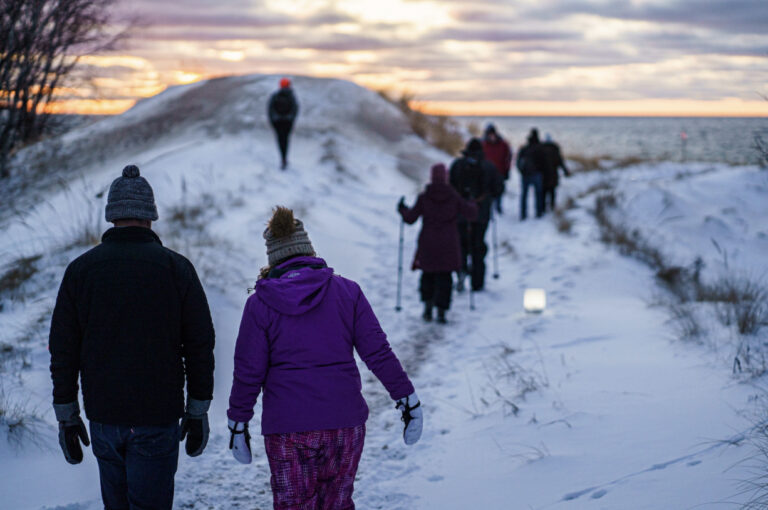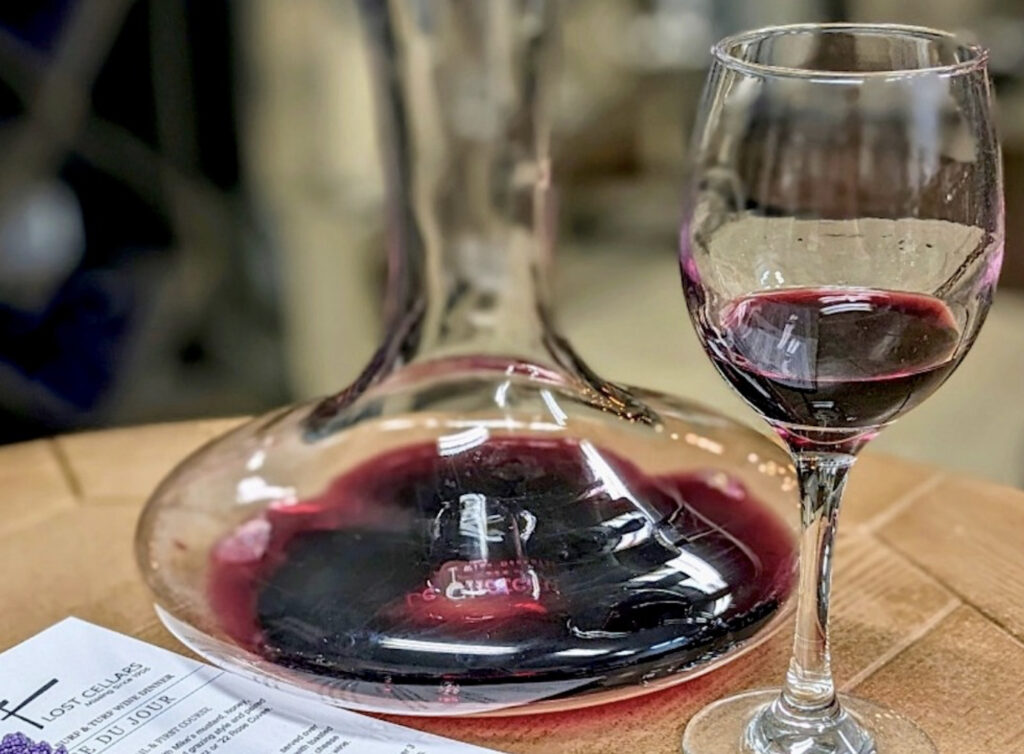News
Wine Under Way from the 2019 Harvest
 This year I decided to concentrate mostly on creating Estate Wines from the Charlevoix Moon Vineyard. Grape production was up from the previous year, in spite of the challenging growing season. We have five wines in various stages of fermentation.
This year I decided to concentrate mostly on creating Estate Wines from the Charlevoix Moon Vineyard. Grape production was up from the previous year, in spite of the challenging growing season. We have five wines in various stages of fermentation.
My favorite red wine grape, Marechal Foch, is going to be produced as a unique rosé wine this year. I used the limited skin maceration style of processing which should produce a richly colored rosé wine that you are not likely to find anywhere else.
This will be the first single varietal vintage year for my estate grown Petite Pearl grapes. This cold hardy red wine grape was developed to thrive in cold climates and reliably ripen in the Fall and it seems to like the Charlevoix Moon Vineyard. I am looking forward to producing a smooth wine with a dark red garnet color. The Petite Pearl is going through fermentation under full skin contact.
The estate grown Riesling grapes are on their way to becoming a medium dry Riesling white wine. Customers are often surprised at the rich flavor of a medium dry Riesling wine, compared to the sweet wine version that others seem inclined to produce. I am hoping for another award winning year with Riesling.
The estate grown Cayuga White grapes will once again become a dry white wine, with the mouth feel of a Sauvignon Blanc wine and a unique grape flavor. The OOGA OOGA Cayuga wine has become a customer favorite for good reason. This should be a good vintage year for OOGA OOGA lovers.
I ventured down the road a few miles to harvest La Crescent grapes from Chickadee Hill Farms, owned by a good friend of mine. I am, once again on my way to making a medium sweet white wine from the La Crescent grapes. This mild white wine tends to have a great mouth feel and fruity flavor that customers enjoyed this past summer.
There may be blend opportunities for the wines under development so you may see the first vintage of Lunatic White to accompany the Lunatic Red that is in the lineup from 2018. We will do some tasting trials this winter to see if that becomes a reality. I don’t force blends, so it has to be right or we wait another year.
Most of the initial fermentation should be finished before year end, with some of the wines going through a secondary fermentation that could go through much of the first quarter of 2020. We won’t be doing any bottling before March. Watch for our call out for volunteer cellar rats at that time.
The Challenging 2019 Grape Growing Season

The 2019 year has been a challenge for grape growers in Northern Michigan and many other parts of the Midwest. Cold Spring weather dragged on to mid-June and slowed down budding and blossoming of all our grape varieties. Once summer finally arrived it was catch-up time for vine and grape growth. We also dealt with only a moderately warm summer, a bit of drought in August, and lots of rain this Fall. These kinds of challenges in the vineyard always make it interesting for the winemaker. That is why I look forward to each vintage year and the difference I can make along the way in the vineyard and in the final wine making process. Having total control of what goes on in the vineyard and having a hands on approach in making all our wines gives me an advantage that shows well in your wine glass. That is what making small batch “artisan” wine is all about.
The 2019 harvest takes place in late October, two to three weeks later than last year. Harvesting that late is always a gamble against early frosts and winter setting in sooner than expected. The reward can be lush ripe grapes that need little extra attention to make great wines. This year I am ready to take that gamble. You will be able to taste the results in Spring 2020.




 Our vineyard is located just north of the 45th Parallel, about two miles east of Lake Michigan in the Tip of the Mitt American Viticultural Area (AVA). The company was established in 2007 as a vineyard supplying local wineries with four varietals of grapes and then in 2015 branched out to develop and sell custom boutique wines. These small batch award winning wines represent the best of northern Michigan, with both estate grapes and select local fruit to curate a collection of specialty wines enthusiasts search out. Purchased by Drs. Jay and Lora Higdon from founder and winemaker Tom Jaenicke, “The Man in the Moon”, this venture fulfills a lifelong dream of the Higdons to bring their own twist of the vino lifestyle to Charlevoix. Dr. Lora Higdon, CEO and president of Christie’s –
Our vineyard is located just north of the 45th Parallel, about two miles east of Lake Michigan in the Tip of the Mitt American Viticultural Area (AVA). The company was established in 2007 as a vineyard supplying local wineries with four varietals of grapes and then in 2015 branched out to develop and sell custom boutique wines. These small batch award winning wines represent the best of northern Michigan, with both estate grapes and select local fruit to curate a collection of specialty wines enthusiasts search out. Purchased by Drs. Jay and Lora Higdon from founder and winemaker Tom Jaenicke, “The Man in the Moon”, this venture fulfills a lifelong dream of the Higdons to bring their own twist of the vino lifestyle to Charlevoix. Dr. Lora Higdon, CEO and president of Christie’s –